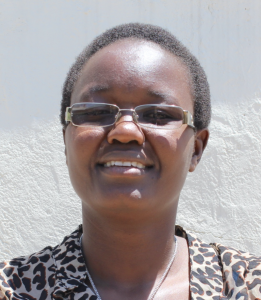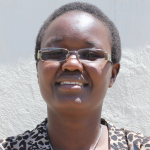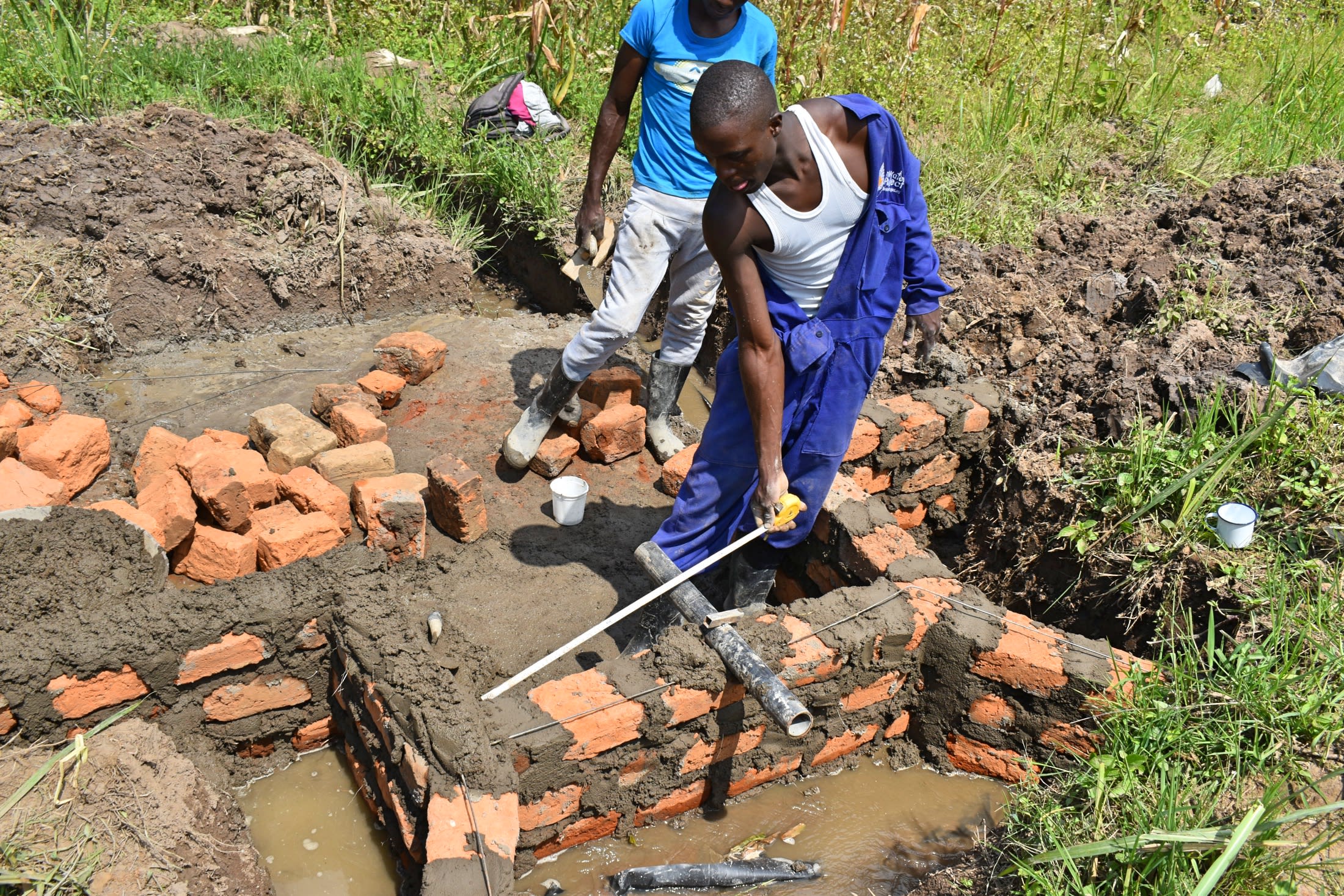People in Mukulutsi are sick more often than they aren't. In recent years, a few community members—including children—have died from what they believe are water-related illnesses. But they don't have the money to spare to hire someone to protect their spring. So they keep getting sick and paying for expensive medicines.
And because community members need to spend so much time scooping up water from the spring, each trip to get water takes a long time. With most households needing to make at least four trips to the water point per day, the time adds up quickly. Between being sick and needing to scoop up water so many times each day, this leaves them with hardly any head-space for anything else.
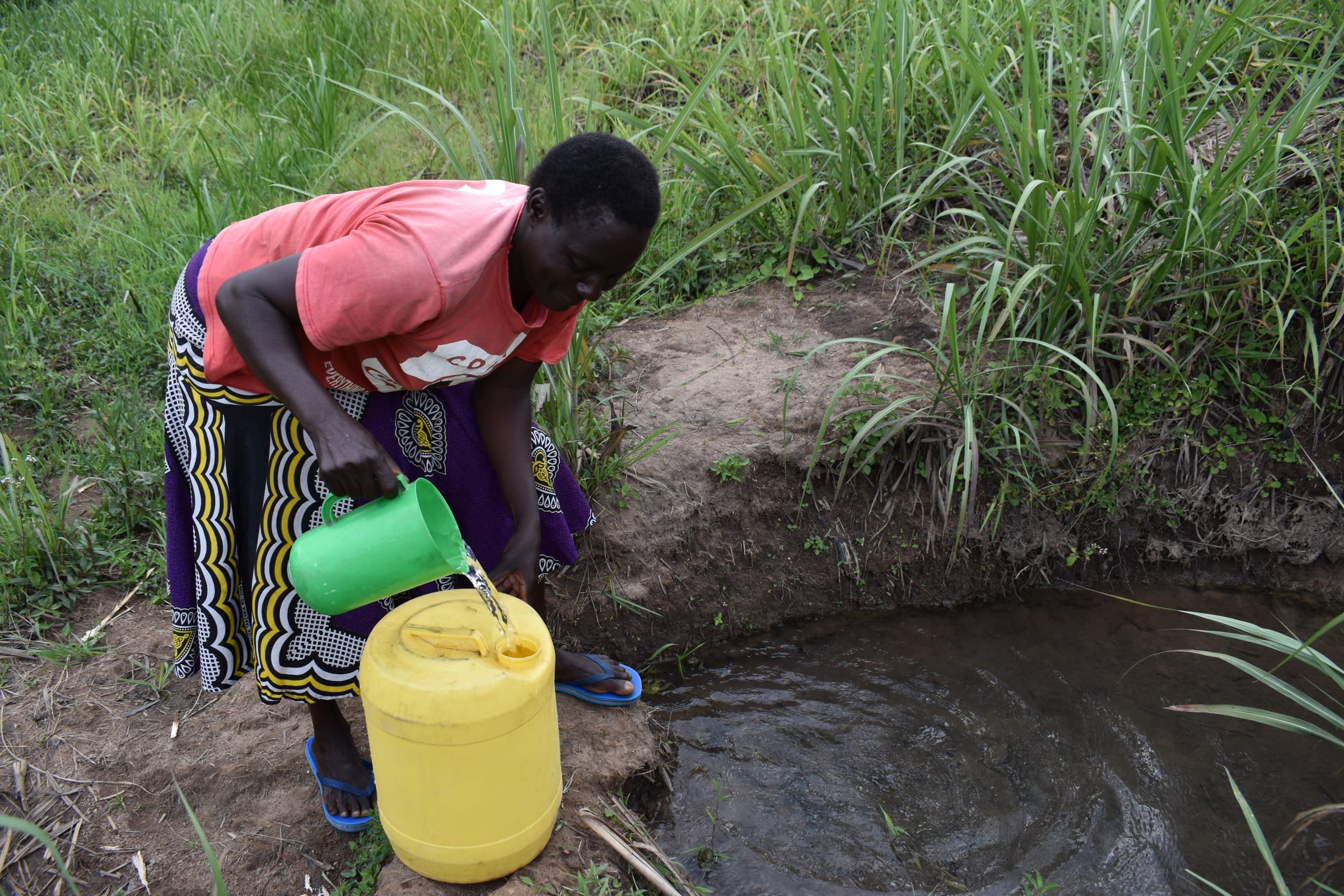
"We have suffered a lot as women and children because I never have time to think of other things than water," explained Mary, a local farmer (pictured above, at the spring). "I believe access to safe water will give families more time to pursue other things like work and education, and this will help us break the cycle of poverty."
Her daughter, Shaleen (in the picture below), echoed the same sentiment. "Fetching water from this source has not been easy because using a scooping jug as a child takes a lot of time. Sometimes I find myself wasting time at the spring instead of doing my homework."
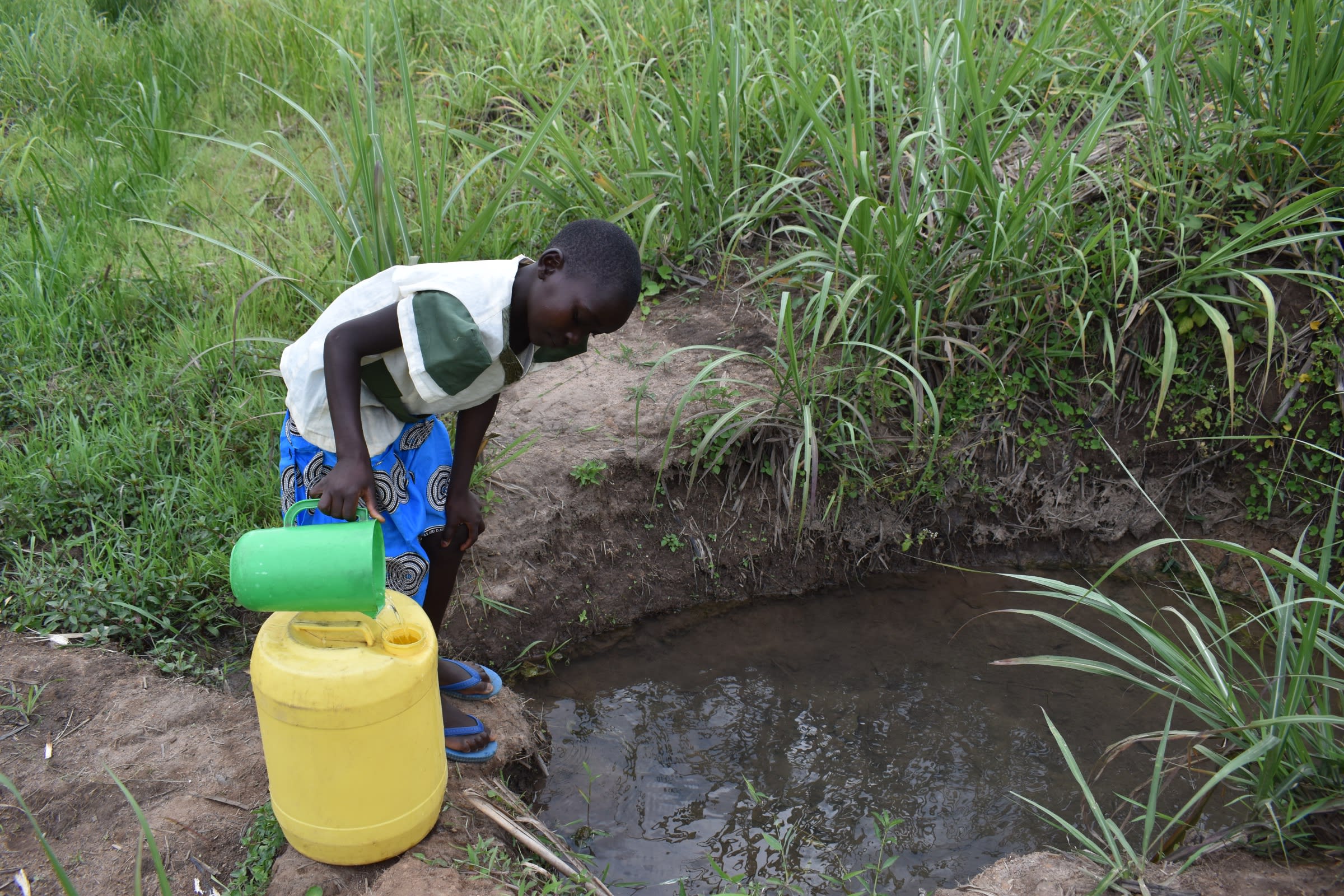
Once the spring is protected, its discharge pipe will allow community members to fill up jerrycans quickly and without the strain associated with stooping and filling each 20 liter jerrycan. Clean water will free up their energy and money for more productive things and prevent further deaths, lifting burdens off of their shoulders. They will be better equipped to support themselves and their loved ones.
What We Can Do:
Spring Protection
Protecting the spring will help provide access to cleaner and safer water and reduce the time people have to spend to fetch it. Construction will keep surface runoff and other contaminants out of the water. With the community’s high involvement in the process, there should be a good sense of responsibility and ownership for the new clean water source.
Fetching water is a task predominantly carried out by women and young girls. Protecting the spring and offering training and support will, therefore, help empower the female members of the community by freeing up more of their time and energy to engage and invest in income-generating activities and their education.
Training on Health, Hygiene, COVID-19, and More
To hold trainings during the pandemic, we work closely with both community leaders and the local government to approve small groups to attend training. We ask community leaders to invite a select yet representative group of people to attend training who will then act as ambassadors to the rest of the community to share what they learn. We also communicate our expectations of physical distancing and wearing masks for all who choose to attend.
The training will focus on improved hygiene, health, and sanitation habits in this community. We will also have a dedicated session on COVID-19 symptoms, transmission routes, and prevention best practices.
With the community’s input, we will identify key leverage points where they can alter their practices at the personal, household, and community levels to affect change. This training will help to ensure participants have the knowledge they need about healthy practices and their importance to make the most of their water point as soon as water is flowing.
Our team of facilitators will use a variety of methods to train community members. Some of these methods include participatory hygiene and sanitation transformation, asset-based community development, group discussions, handouts, and demonstrations at the spring.
One of the most important issues we plan to cover is the handling, storage, and treatment of water. Having a clean water source will be extremely helpful, but it is useless if water gets contaminated by the time it is consumed. We and the community strongly believe that all of these components will work together to improve living standards here, which will help to unlock the potential for these community members to live better, healthier lives.
We will then conduct a small series of follow-up trainings before transitioning to our regularly scheduled support visits throughout the year.
Training will result in the formation of a water user committee, elected by their peers, that will oversee the operations and maintenance of the spring. The committee will enforce proper behavior around the spring and delegate tasks that will help preserve the site, such as building a fence and digging proper drainage channels. The fence will keep out destructive animals and unwanted waste, and the drainage will keep the area’s mosquito population at a minimum.



 Rehabilitation Project
Rehabilitation Project










